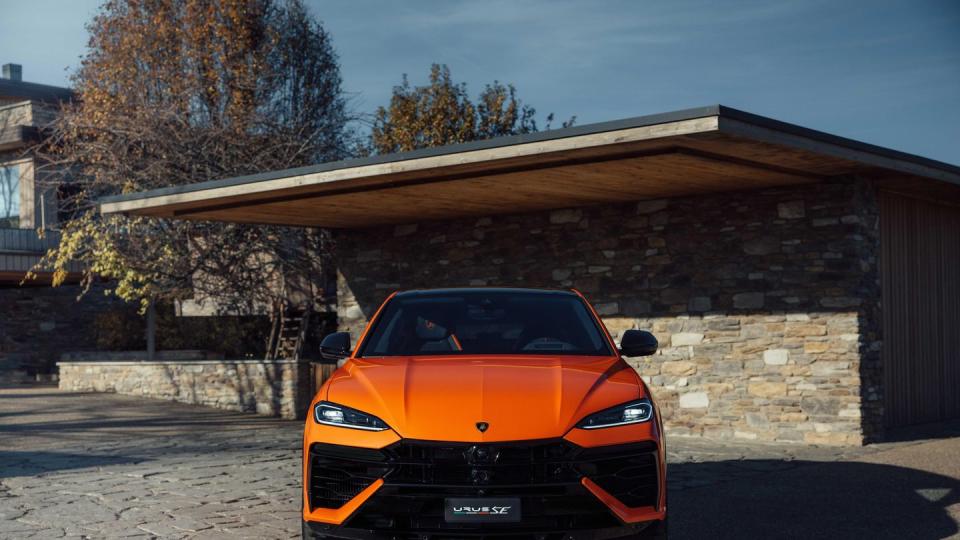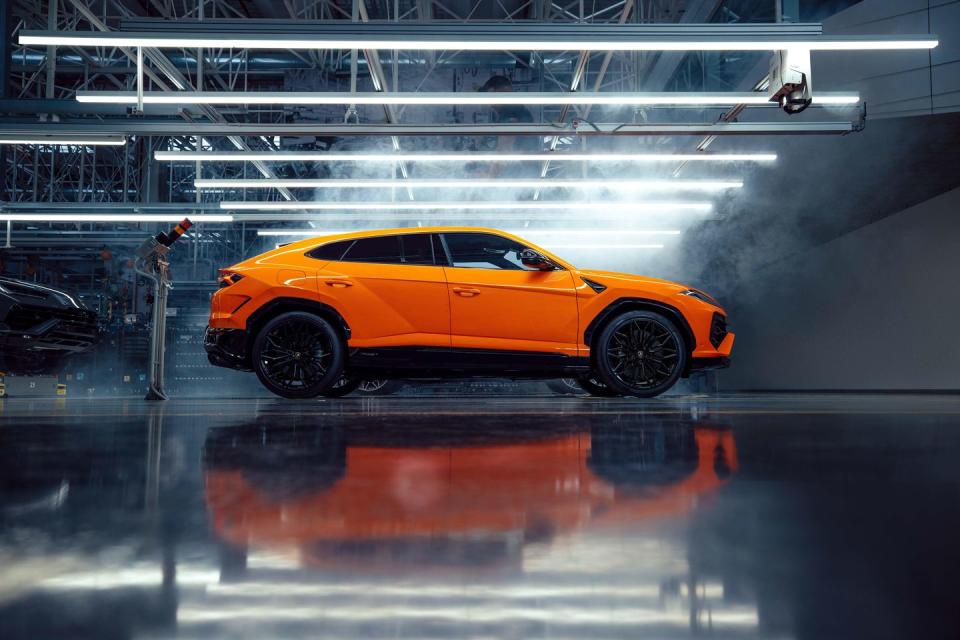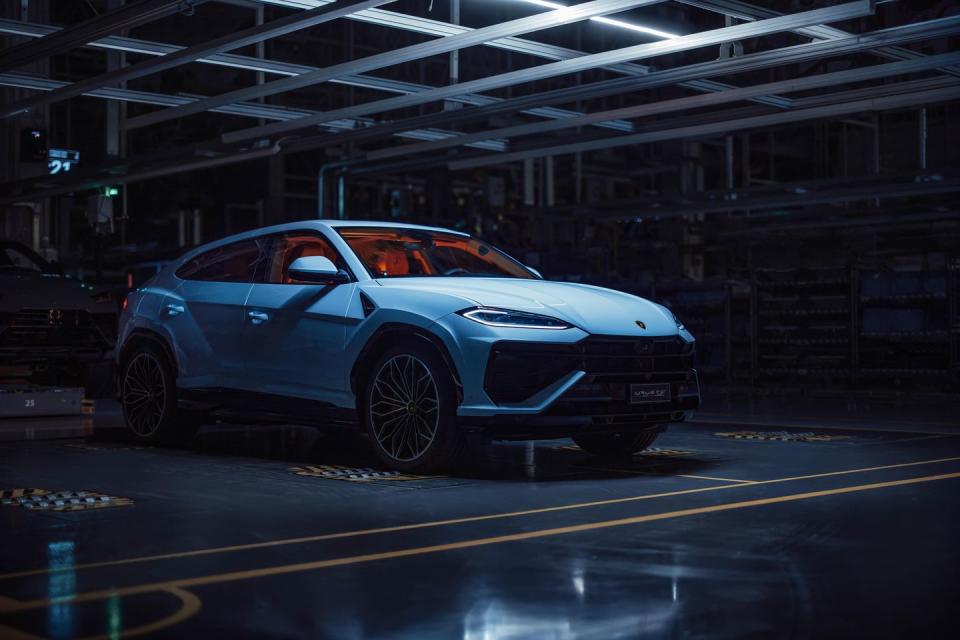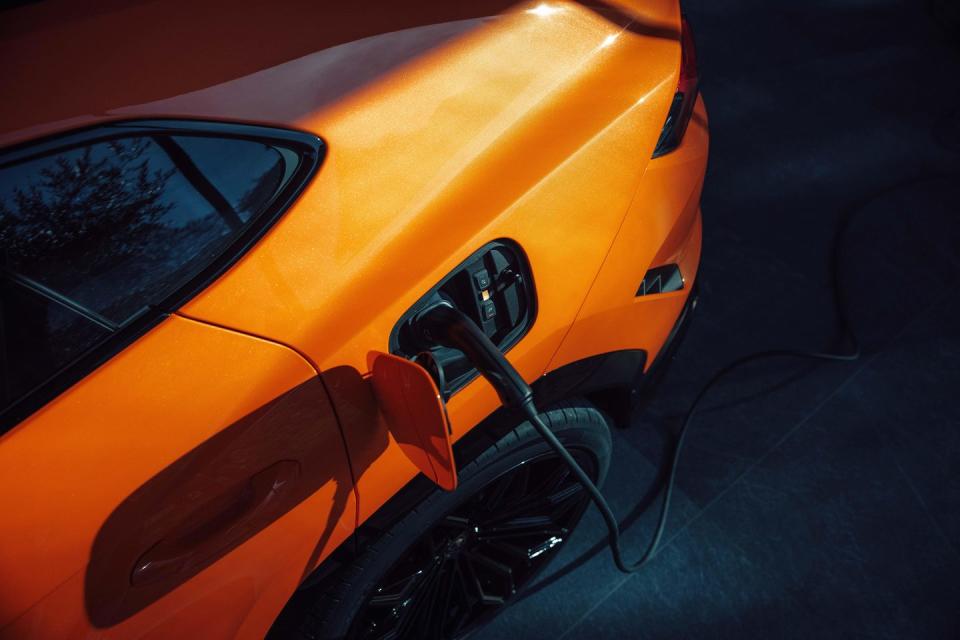Lamborghini's New Electric Torque Vectoring System Is Startlingly Complex

With a twin-turbo 4.0-liter V-8, a single electric motor at the rear, and 789 hp, the 2025 Lamborghini Urus SE is certainly quick enough to run with its supercar siblings, but the real trick is underneath it. A centrally-located longitudinal electric torque vectoring system actuated by an electro-hydraulic multi-plate clutch makes the Urus SE a testament to modern engineering, and its dynamic aids are as complex as they are brilliant.

To better understand exactly what is going on underneath the Urus SE, we took a tour of the new super-SUV with Lamborghini's Chief Technical Officer, Rouven Mohr, at the Lamborghini Lounge in New York City. But before diving into the specifics of the new electrified Urus, Mohr wanted to make particular note that electrification isn't a greenwashed marketing ploy for Lamborghini.
"For us, it's always important to underline that it's a performance-oriented hybrid," Mohr said in an interview with Road & Track. "It's not a downsizing hybrid. One of the main reasons to buy a Lamborghini is the design and the brand, but also the performance. We don't want to have the wrong kind of compromise"
Taking the admittedly difficult set of parameters that is a hefty curb weight, athletic dynamics, and SUV comfort, Lamborghini's Urus SE skews towards the sporty side of things, particularly in its drivetrain efficiency. Fitted with a 25.9-kWh lithium-ion battery that is mounted underneath the rear hatch and on top of the electronic rear limited slip differential, the Urus SE will only be able to go about 30 miles on all-electric power. It is, as we've found with other big hybrid SUVs, a meaningful range extension.

The interesting side of this hybrid drive, though, is what Lamborghini has been able to do with it to improve handling. Swapping out the mechanical Torsen center differential found on the previous generation Urus, Mohr said the new AWD system is hang-on style instead. Rather than relying on a mechanical link between the Torsen differential and front axle, an electro-hydraulic multi-plate clutch modulates the amount of torque sent to the front wheels.
"The big advantage of this hang-on system is that you can completely and freely choose how much torque you want to put to the front," Mohr explained in an interview with Road & Track. "This allows us to have a much more agile driving experience. You even perceive it when you are not driving at the limit because the front axle feels a little bit more free."
Mohr says that the connection between the centralized torque vectoring system and the front axle is a great improvement over the previous Torsen-based system. Instead of being stuck with a standard torque distribution, Lamborghini can now adjust torque splits as the road surface changes, and with a greater reaction speed, too. Just how fast, Mohr couldn't say, but he did confirm it was much quicker than the Torsen unit.

Even so, he admits that early hang-on AWD systems were not faultless. With reactive programming, many hang-on systems felt laggy and one step behind when it came to traction management. This gave some appeal to strictly mechanical, almost dumb all-wheel drive systems for the past few decades. look at how we venerate the Audi Quattro, for instance. But there is more that can be done with digital systems, according to Lamborghini. Using an in-house developed algorithm, Lamborghini set out to make the Urus SE more proactive than reactive.
"The mechanical system can only react to the [driving] situation," Mohr said. "This system has this degree of freedom because you can use it in a kind of anticipation and this makes the driving behavior much more homogeneous. And also much more fun to drive because you don't need the skills to find exactly the sweet spot when the car is not understeering."

Notably, the Lamborghini Urus SE also differs from other electrically-assisted performance vehicles in that the electric motors aren't used on a per-wheel, torque vectoring basis. Instead, the electric motors are purely used for propelling the wheels forward, not interfering with traction or braking abilities. However, Mohr did confirm that the brakes themselves are part of this torque vectoring system and can be applied individually to that end.
"In the old car, we had to compensate for this understeering behavior with a dedicated setup for the active anti-roll bars and also the suspension was stiffer," Mohr said. "This is not needed anymore."
Because of the new drivetrain setup, Mohr says that Lamborghini engineers were able to make the Urus SE a bit softer and even reduced the angle of rear-axle steering needed for agility. Beyond some updated calibration to the air suspension accounting for a shift in weight distribution, the suspension remains largely the same from a hardware perspective.
Other updates to the Urus SE include additional cooling power (15 percent more engine cooling and 30 percent more brake cooling) to match the bump in power provided by refreshed cylinder heads and new turbochargers. With a new rear hatch lip spoiler, Lamborghini says it has reduced lift by 38 percent, too. Perfect for when you decide to max out the rather full-sized Urus SE at 194 mph.
Philosophically, the Urus SE represents a blueprint for the future of Lamborghini's performance endeavors. Unlike the electrified, 1000 hp, angular-designed Revuelto supercar, the Urus SE is made for street driving comfortably (and quickly). Its mechanical makeup is easier to reproduce, especially when compared to the Revuelto's axial-flux electric motors and minuscule battery. It's a new horizon for AWD development, and only going to get more interesting as engineers unlock more performance from electric drive.
You Might Also Like

 Yahoo Autos
Yahoo Autos 